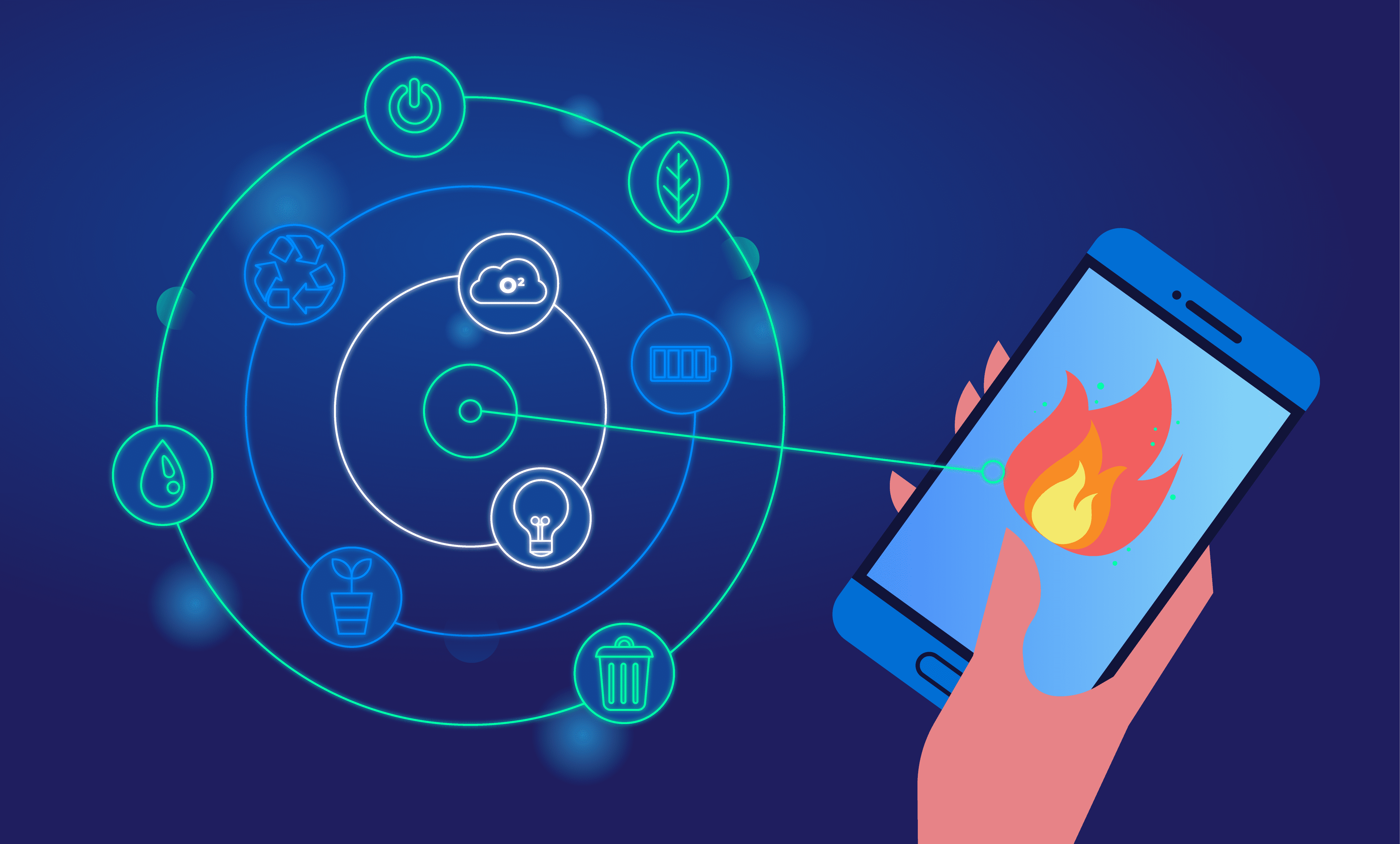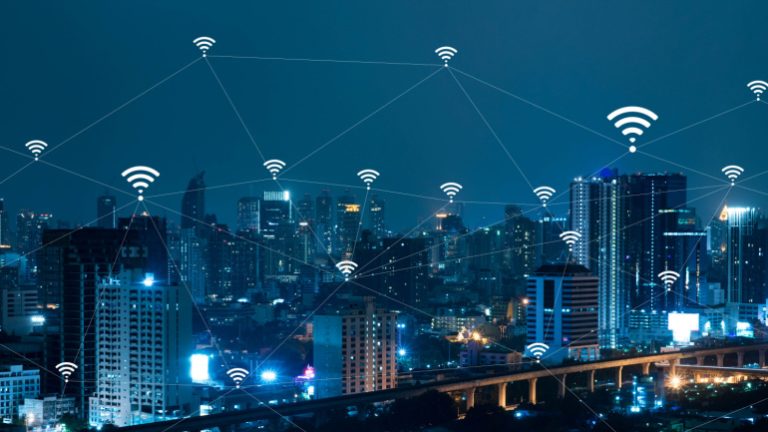
I spoke recently with Carsten Brinkschulte, co-founder and CEO of Dryad. Here is some of our conversation.
Carsten, tell me a bit about yourself, Dryad, and your product, Silvanet.
I’ve been in telecoms for 25 years. I’ve had three startups and three exits in the space, in 4G network infrastructure, mobile email, instant messaging services, and device management. I started Dryad in 2020 with five co-founders. Dryad is what you’d call an “impact for profit” company. The mission is to be green, not just as a PR exercise. We want a positive environmental impact, but also a profit—then we can have more impact.
We introduced Silvanet in 2023 to focus on the ultra-early detection of wildfires because they have such a devastating environmental impact, particularly on global warming. Between six and eight billion tons of CO2 are emitted in wildfires across the world each year, which is 20% of global CO2 emissions.
Our mission is to reduce human induced wildfires. Arson, reckless behavior, accidents, and technical faults account for 80% of fires. We want to prevent biodiversity loss and prevent CO2 emissions, but also address economic loss because fires cause huge amounts of damage. The low end of the figures is about $150 billion, but that figure can go up to $800 billion a year, depending on how you look at the statistics.
What is your solution?
Silvanet is an end-to-end solution—sensors, network infrastructure, and a cloud platform. We’ve developed a solar powered gas sensor that we embed in the forest: you can hang it on a tree. It is like an electronic nose that can smell the fire. You don’t have to have an open flame: someone can throw a cigarette, then depending on wind and other parameters, a close-by sensor should be able to detect it within 30-60 minutes.
We’re running embedded AI on the edge in the sensor, to distinguish between the smells that the sensor is exposed to. When the sensor detects a fire, it will send an alert.
Sensors are solar powered. The solar panels are quite small but big enough to power the electronics via a supercapacitor for energy storage. It doesn’t have as much energy density as a battery, but it doesn’t have the downside. Lithium ion would be a silly idea because it can self-ignite. We didn’t want to bring a fire starter to the forest.
Obviously, you don’t get much direct sunlight under the trees, but the supercapacitors work well in low temperatures and have no limitations with regards to recharge cycles. The whole setup is highly efficient. We take care to not use excess energy.
Next, since we are in the middle of a forest, we typically don’t have 4G or other connectivity, so Silvanet works as an IoT mesh network. We’re using LoRaWan for the communications, which is like Wi-Fi but lower power and longer range—it can communicate over a few kilometers. We’ve added the mesh topology because LoRaWan doesn’t have mesh. Nobody else has done this as far as we are aware.
The mesh enables us to cover large areas without any power nearby! Sensors communicate from deep in the forest, over the mesh to a border gateway. Then a cloud platform captures the data, analyzes it further, and sends out alerts to firefighters.
What does deployment look like?
Deployment density depends on the customer. You typically have irregular deployments where you focus on high risk, high value areas. In remote locations, we put less sensors, but in areas like along a road highway, walking paths, power lines, and train lines, where most of the fires are starting, we put many more.
Humans don’t start fires in the middle of the forest. They’ll be along hiking paths where people throw a cigarette, or a campfire grows out of control or is not properly extinguished. For the rest, you could have a lightning-induced fire, or a power line where a tree falls onto it, or a train sparks, causing a grass fire that turns into a bush fire and then a wildfire.
You end up with variable density. You need one sensor per hectare, roughly three acres, for a fast detection time, then one sensor for five hectares overall.
Other solutions include optical satellite systems, which look down from space to detect fires with infrared cameras, or cameras on the ground that can see smoke plumes rising above the trees. All these systems make sense. Satellites are invaluable for seeing where big fires are heading, but they’re late in the game when it comes to detection. Cameras are good as well because they are closer to the action.
The fastest is arguably the electronic sensors, but they can’t be everywhere. So, ideally you would deploy all three systems. Cameras have a greater overview, and satellites have the biggest picture. You can focus sensor systems on areas of high risk, high value—like in the interface, where you have got people causing fires but also are affected by fires.
Do you have an example?
We have a pilot deployment in Lebanon. The deployment was high density because it’s what’s called a wild-urban interface—there are people living in villages, some farming activity, and forests. It’s of the highest risk and highest value because if there is a fire, there’s a good chance that it spreads and becomes a conflagration—then you have a catastrophe.
Within the pilot, we detected a small fire within about 30 minutes. Initially, the AI in the sensor calculated from the gas scans, a 30% probability of it being a fire. The wind may have changed as the probability went down, then about 30 minutes later it sensed more smoke and “decided” it was really a fire.
How’s business looking?
We try to keep pricing as low as possible—despite being manufactured in Germany, we’re less than €100 a sensor. We have a service fee for operating the cloud, charged on an annual basis, but that’s also low cost.
Last year, we sold 20,000 sensors worldwide. We now have 50 installations in southern Europe–in Greece, Spain, and Portugal–and in the US in California, in Canada, in Chile, and as far as South Korea. We have a deployment in the UK, with the National Trust. We’ve also three or four forests in Germany, in Brandenburg, which is very fire prone and dry as a tinderbox.
This year, we’re expecting more than 100,000 sensors to be shipped. We’re ramping up manufacturing to allow for that volume. We’re properly funded with venture capital—we just raised another 5.6 million in the middle of March to fuel the growth we’re seeing.
The vision is to go beyond fire: once a network is installed in the forest, you can do much more. We’re starting to work on additional sensors, like a fuel moisture sensor that can measure fire risk by measuring moisture in the fuel that’s on the ground, a dendron meter that measures tree growth, and a chainsaw detection device to detect illegal logging.



